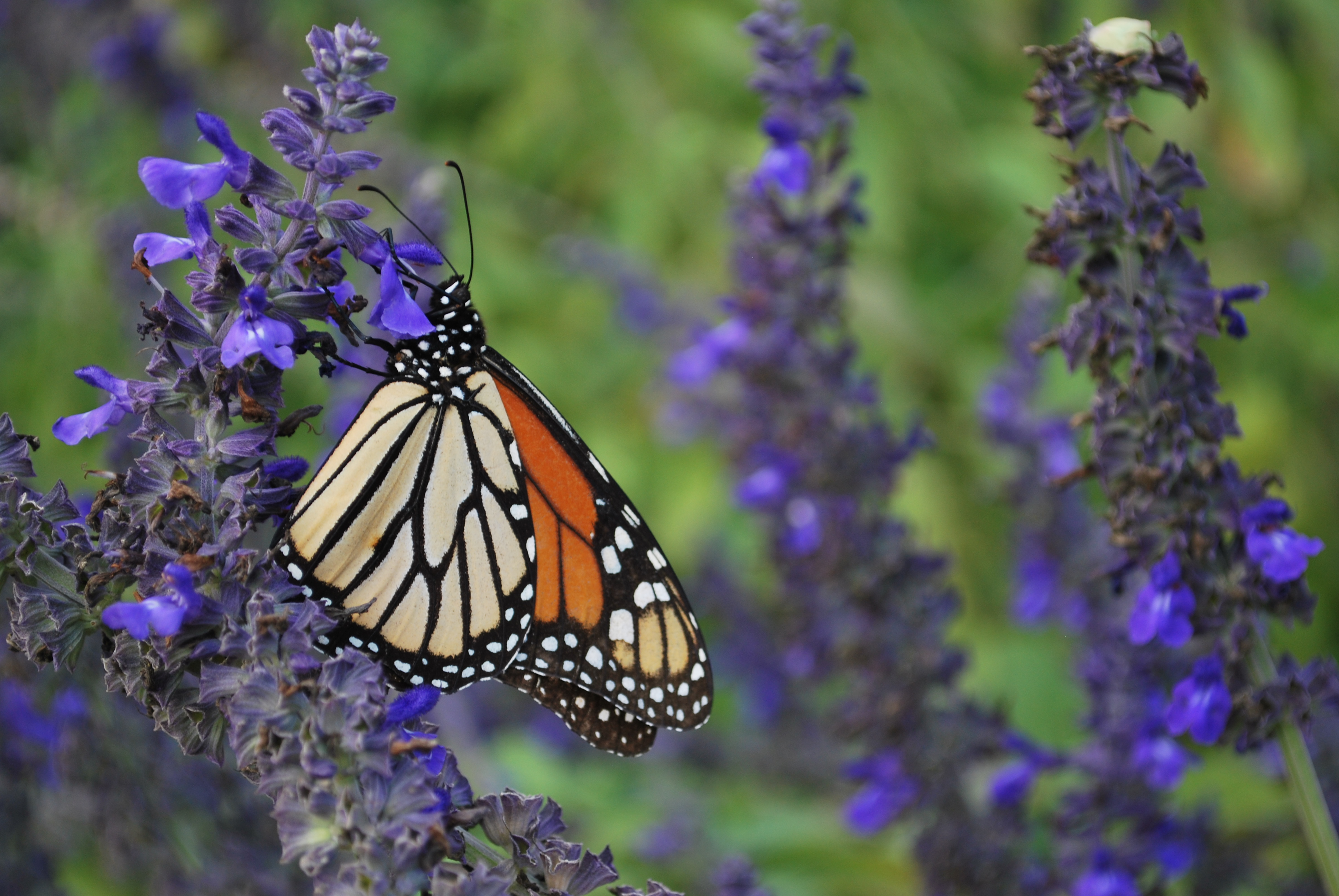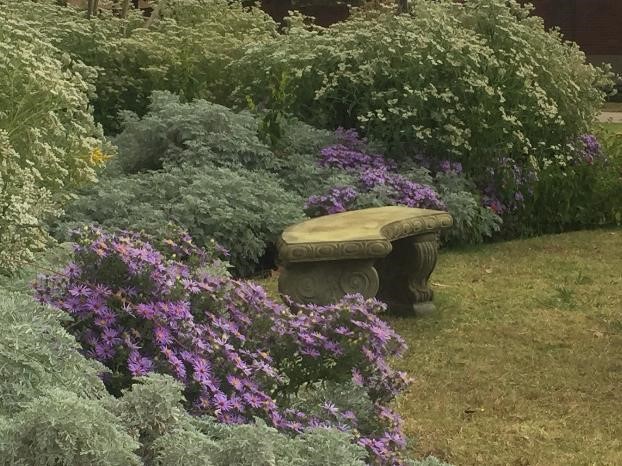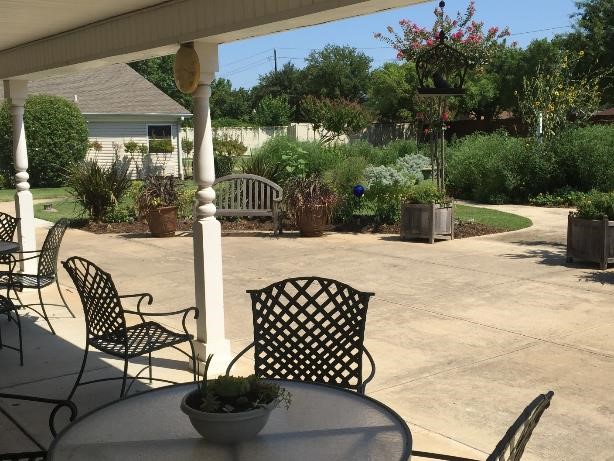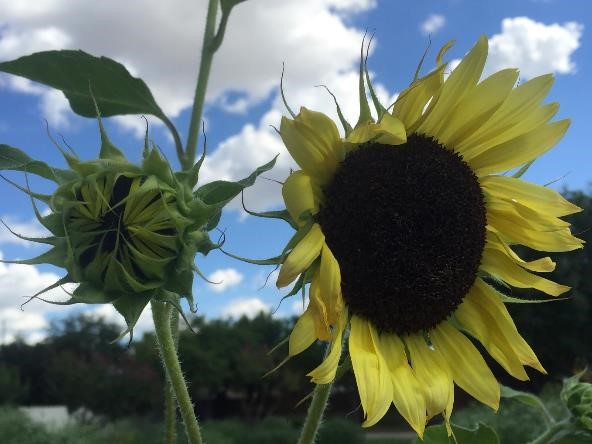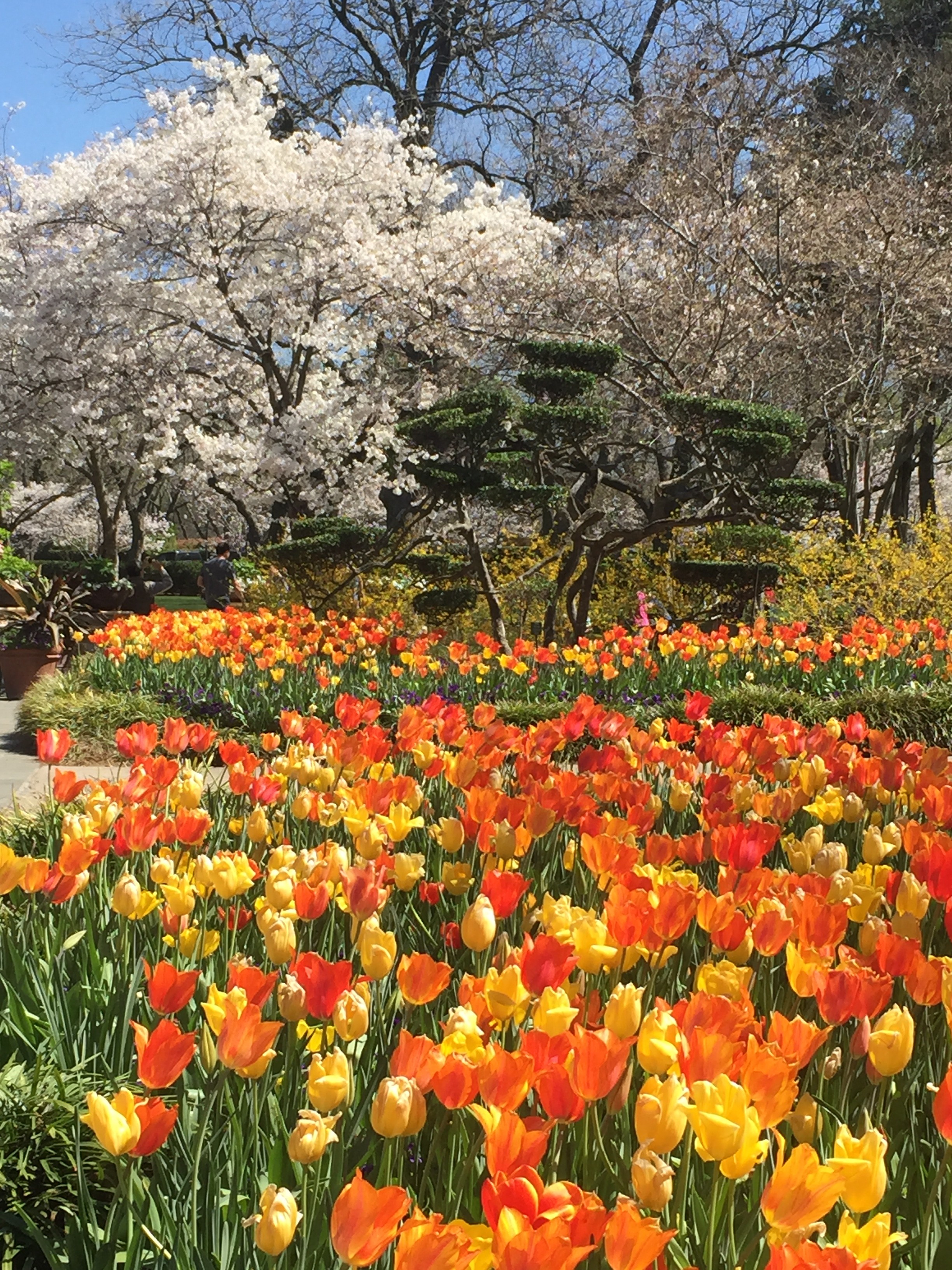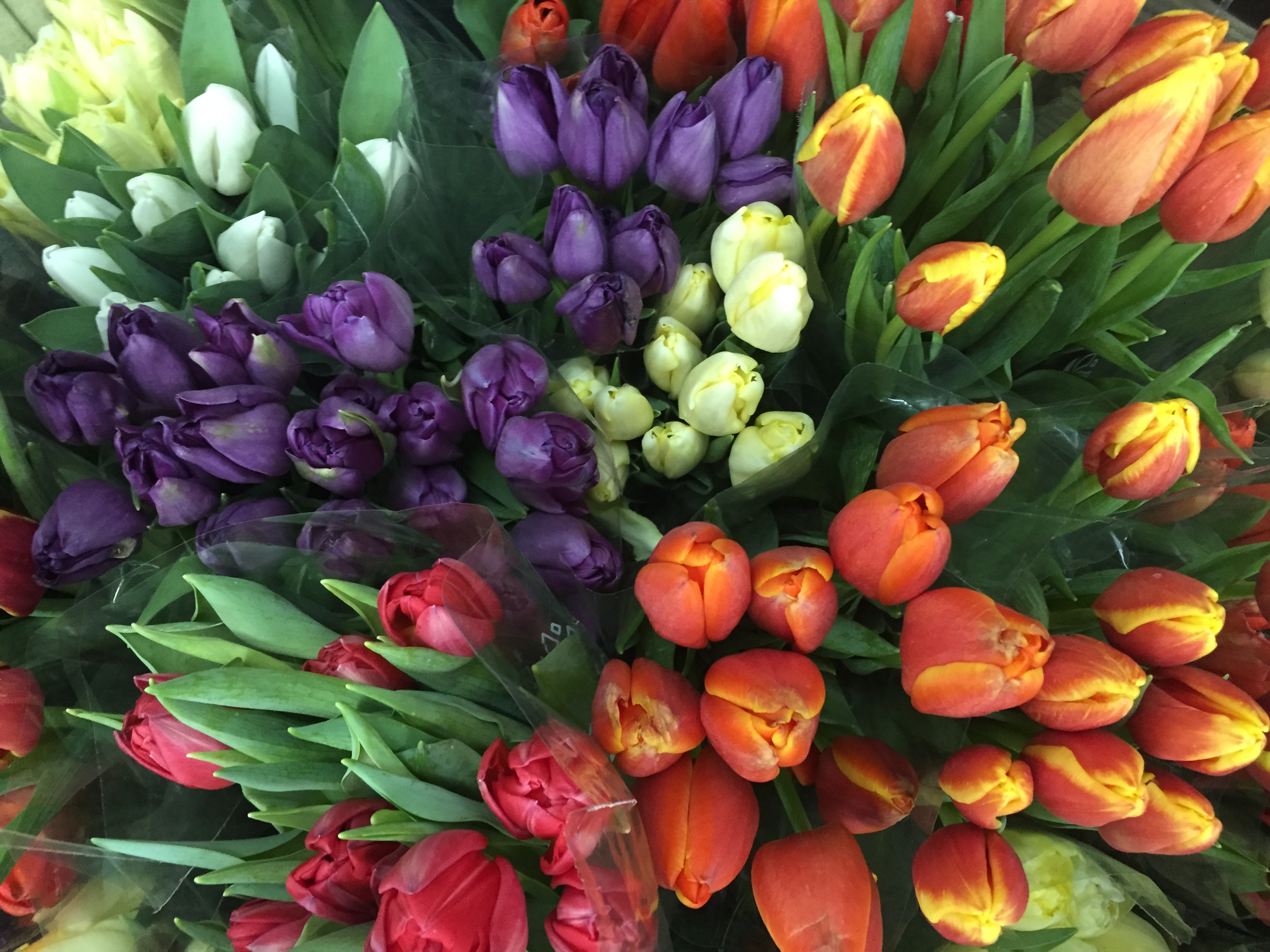Plants for a Cutflower Garden
Guided Imagery: Chasing the Cold Away with Colorful Blossoms
Creating a Wildlife Friendly Habitat
In 2015, I wrote about an initiative in which President Obama proposed a “pollinator highway” that extends along Interstate 35. The I-35 corridor runs north to south from Minnesota through Texas and follows the monarch butterfly migration route. I-35 runs right through the Dallas-Fort Worth area, and every fall it is an amazing spectacle to see the monarchs feeding on nectar plants as they travel through on their way to Mexico for the winter. (Check out the monarch migration routes in North America on the map found here. Read more about pollinators here.) This highway would be planted with milkweed and other pollinator friendly plants that would make for easy “rest stops” for butterflies (and other pollinators too!) to eat and rest along their journey. (Read more about the pollinator highway proposal here.)

Fast forward to late 2015, the National Wildlife Federation sponsored an initiative called the Mayors’ Monarch Pledge, which is “a national campaign asking mayors to commit their cities to a series of specific actions to make their urban habitat friendlier to the declining monarch butterfly and other wildlife” (Argueta, 2015). Several mayors in the Dallas-Fort Worth area signed this pledge, along with mayors from communities around the country. (Read more about the pledge here.)

In therapeutic horticulture programs, teach clients about pollinators and other wildlife. In learning their stories, these can become great lessons on shifting focus from the self to the broader world and recognizing that we are all citizens of the world, even bees, hummingbirds, and bats. A client might also be able to compare his or her own experiences in dealing with personal challenges when learning about the plight of certain pollinators, who themselves face various challenges like threatened habitats. The story of the trek that the monarchs make during their migration can be a metaphor for the hero’s journey – overcoming the odds and experiencing transformation through struggle.
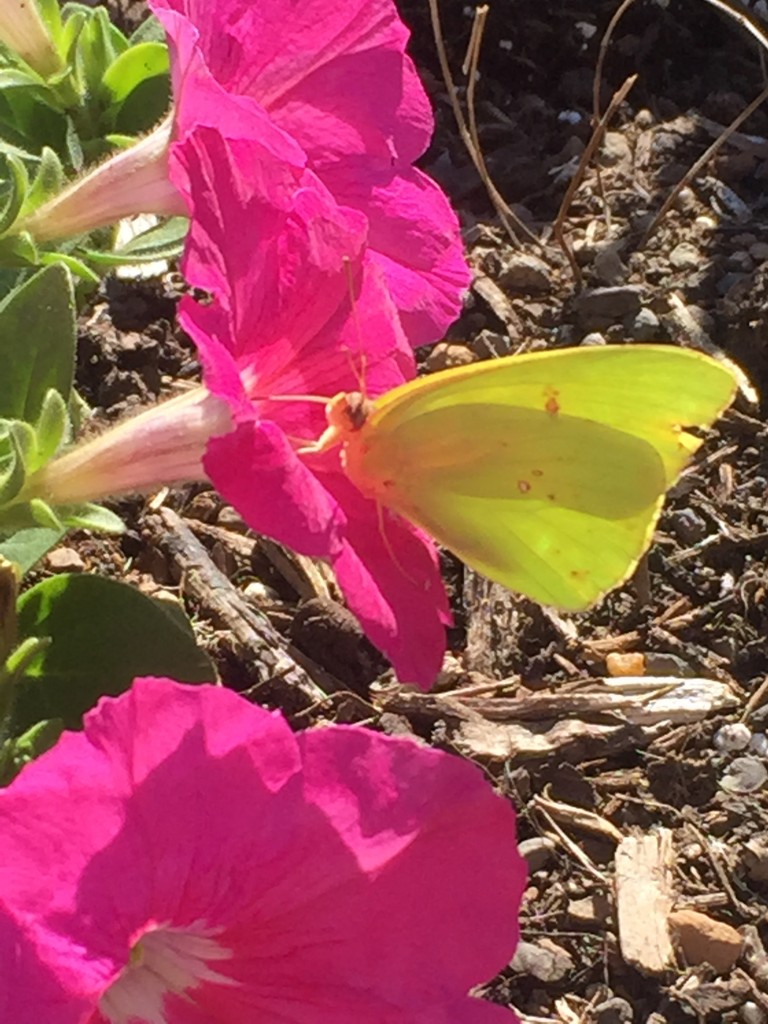
One way to introduce this concept is to join the Million Pollinator Garden Challenge and cultivate a wildlife friendly garden as part of your program…then get your garden certified as a wildlife habitat through the National Wildlife Federation. A wildlife friendly garden incorporates food and water sources for various types of wildlife, options for shelter and places to raise their young, and sustainable gardening practices. In order to meet the requirements of NWF’s wildlife habitat program, refer to their website for more details.

During National Horticultural Therapy Week this week, the staff, clients, and volunteers at Arden Courts of Richardson in Texas held a ceremony to honor the recent NWF wildlife habitat distinction of their gardens, which include raised beds, containers, and in-ground planting beds. This distinction was earned as the result of many people’s hard work, sweat, and plenty of dirt under our fingernails. The gardens contain a variety of sensory stimulating herbs and other plants that are pollinator friendly and drought and heat tolerant, birdhouses, birdbaths, among other garden features. Check out some photos of our garden spaces.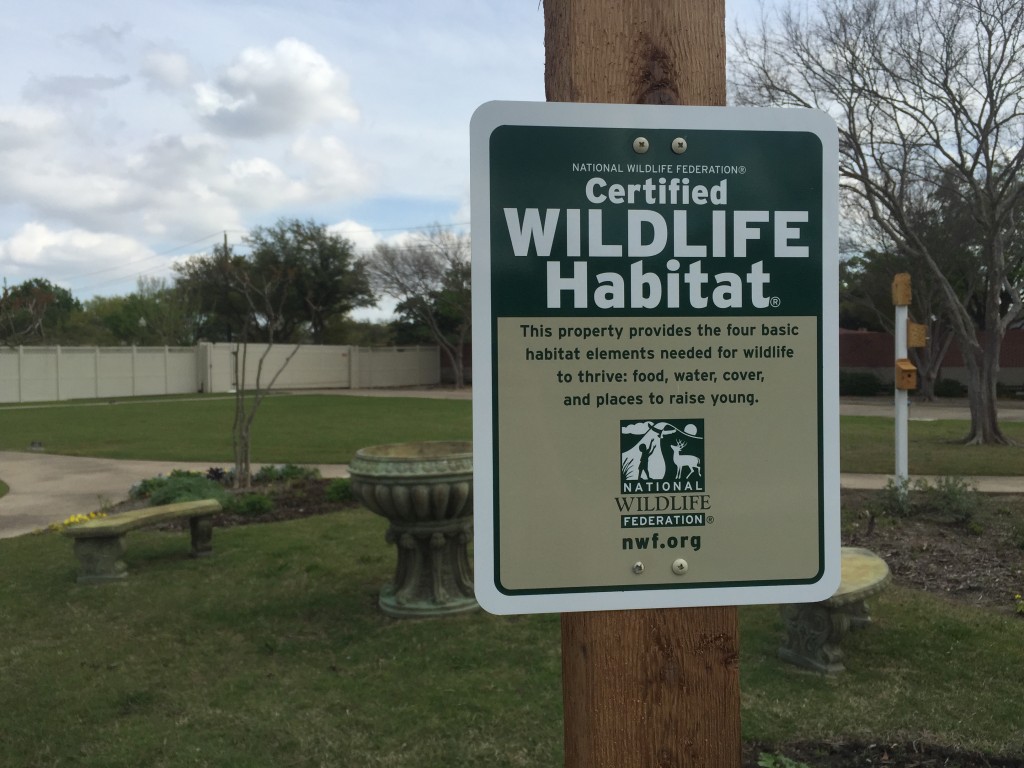
The Guelph Enabling Garden – Something for Everyone
Hanami – Celebrating the Ephemeral Beauty of the Cherry Blossom
Celebrating National Horticultural Therapy Week!
What Florists Know [And What We Wished We Knew] About Spring Flowering Bulbs
The Transformative Experience of Basil Seed
At a time when gardeners are sowing seeds in preparation for the spring garden, let’s talk about seeds…basil seed in particular.
About a year ago, friend and fellow practitioner Charles Plummer of Youth with Faces told me about how basil seed can change before your very eyes, if you just add water. He had learned this from Rebecca Haller, HTM, during one of the Horticultural Therapy Institute’s courses.
Somewhat skeptical, I said, “Well, what happens?”
He encouraged, “Just give it a try and see what happens.”
It took me a couple more months – when I was preparing to lead a seed sowing session with one of my groups – before I was in the same room as basil seed, an eye dropper, and some water. So in taking Charles’ advice, I gave it a try.
And WOW!
Did you know that basil seed can change right before your eyes in just a few seconds?
In a world of instant gratification, clients can sometimes get impatient with the “slow growing” nature of plants in the garden. This is a great opportunity for a meaningful lesson, or actually a series of lessons, on the phrase “Good things come to those who wait.” The act of nurturing a plant – from seed to seedling to full grown plants that can be harvested for eating or collecting seed – can help the gardener experience the cyclical nature of life in real time. Some things just don’t happen overnight…patience is a virtue.
However, at other times, an activity with instantly gratifying results can be equally as powerful and transformative. Here, watching a basil seed from start to finish can help shift a person’s self-focused attention outside of themselves to something that is so tiny. In a sense, it can be incredibly grounding for one’s perspective to watch a seed that’s a centimeter in size transform itself. (Read more on the transformative nature of awe and the healing power of awe, supported by recently published research in the journal Emotion.)
So what exactly does the basil seed do when you add water? As Charles would say, just give it a try yourself. I’ll give you a sneak peek below.
 To start, gather together the following materials: basil seed (I used the Genovese type because it was handy, though I’m sure pretty much any basil seed would work), cup of water, eye dropper, and your hands.
To start, gather together the following materials: basil seed (I used the Genovese type because it was handy, though I’m sure pretty much any basil seed would work), cup of water, eye dropper, and your hands.
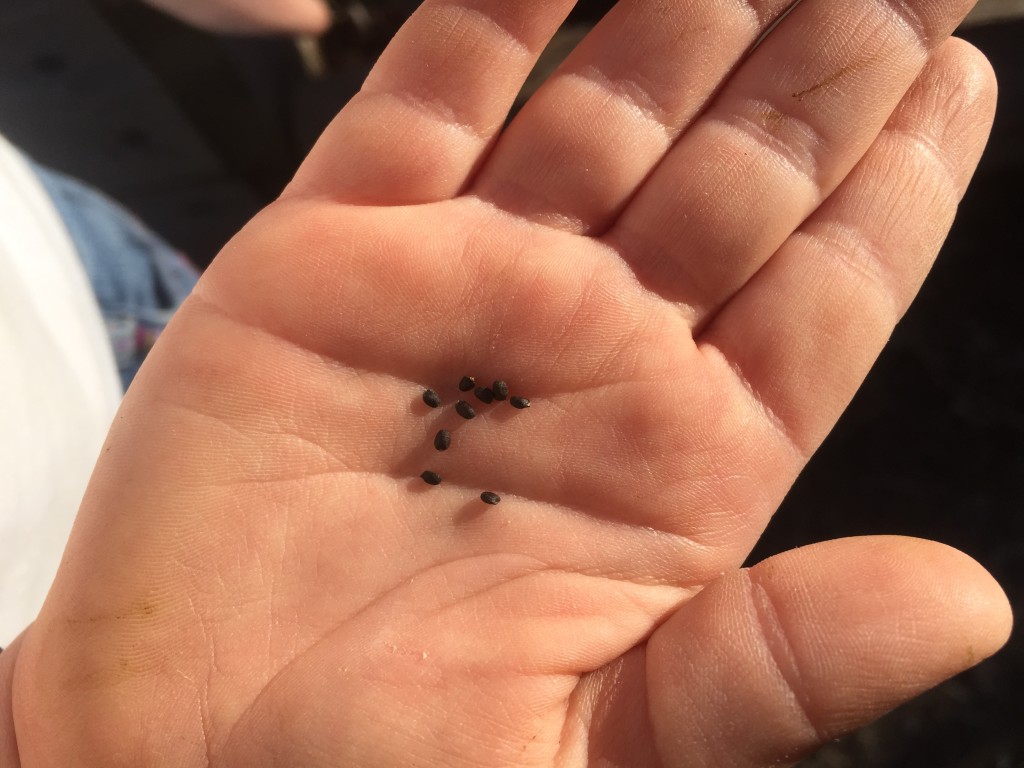 Open your hand out flat so that the palm of your hand is facing up toward the sky. Gently tap some basil seed out of the seed packet into the palm of your hand. Take note of what the basil looks and feels like at this time. The seed is tiny in size and black in color – it kinda looks like the poppy seeds that get stuck in your teeth after eating a poppy seed bagel. Use a finger from your other hand to roll the dry seed around in your hand. Focus your attention on the sensation of the seed rolling around in your hand.
Open your hand out flat so that the palm of your hand is facing up toward the sky. Gently tap some basil seed out of the seed packet into the palm of your hand. Take note of what the basil looks and feels like at this time. The seed is tiny in size and black in color – it kinda looks like the poppy seeds that get stuck in your teeth after eating a poppy seed bagel. Use a finger from your other hand to roll the dry seed around in your hand. Focus your attention on the sensation of the seed rolling around in your hand.
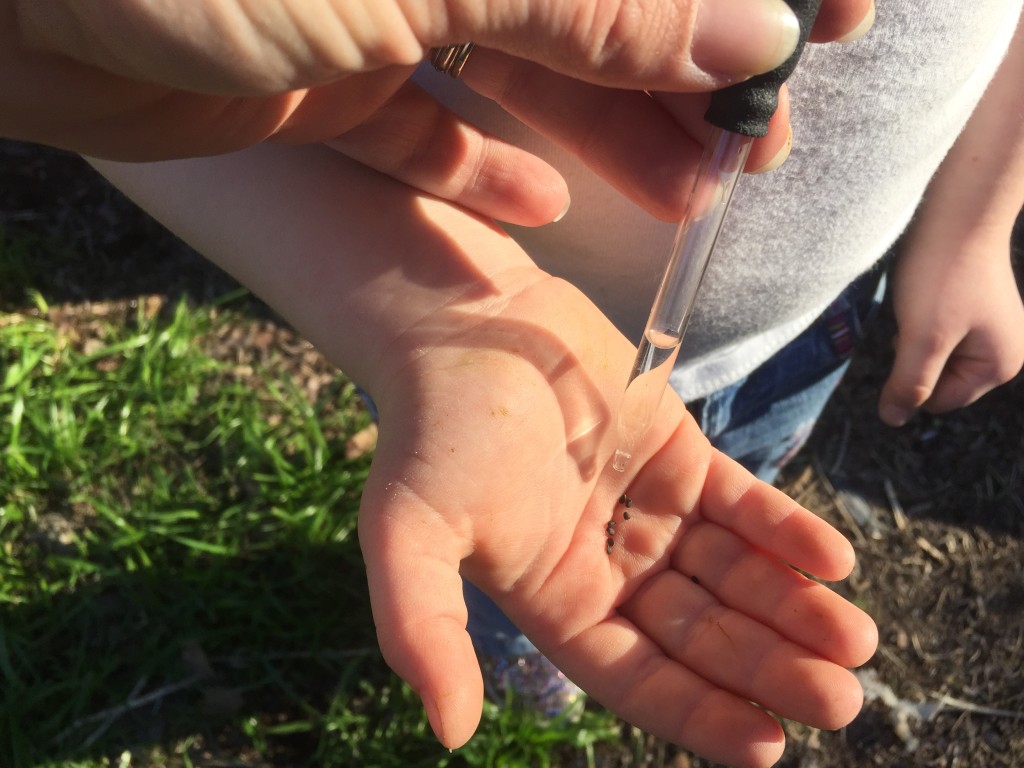 Next, get some water in your eye dropper and add a few drops of water over the top of the seed. Make sure the seed has contact with the water.
Next, get some water in your eye dropper and add a few drops of water over the top of the seed. Make sure the seed has contact with the water.
 Notice how the added water feels to your skin – cool and wet. And watch.
Notice how the added water feels to your skin – cool and wet. And watch.
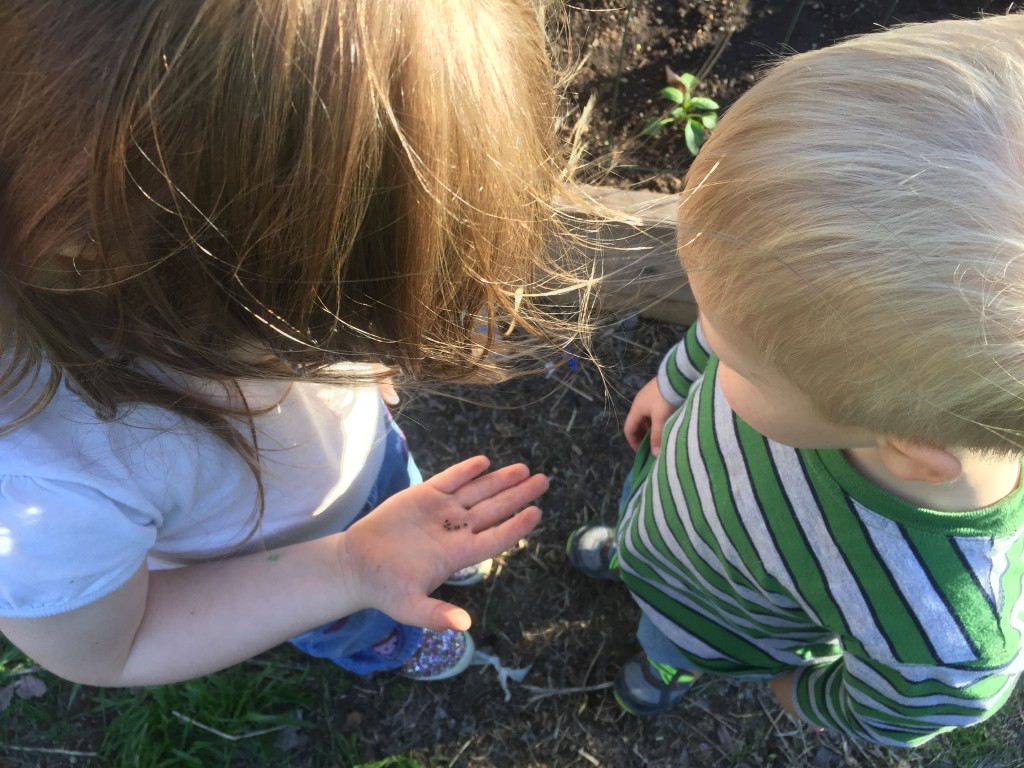 Focus all of your attention on the seed. Be patient and watch. It doesn’t happen instantly. And, don’t worry, the seeds aren’t jumping beans, so they won’t start popping up into your face. They also don’t grow spikes or turn into orange and blue polka dots.
Focus all of your attention on the seed. Be patient and watch. It doesn’t happen instantly. And, don’t worry, the seeds aren’t jumping beans, so they won’t start popping up into your face. They also don’t grow spikes or turn into orange and blue polka dots.
Just watch…
And watch…
And watch until…
There! Do you see it?!?
What happened? The basil started turning a different color. What color? It’s kind of a gray color, right?
Keep watching…
 After a few seconds – at least 30 seconds, probably more – the basil seed will soak up most, if not all, of the water. The seed will have changed from tiny, black seeds to slightly larger, puffier, whitish gray seeds. If you look very closely, you can actually see the layer of seed mucilage over the seed coat.
After a few seconds – at least 30 seconds, probably more – the basil seed will soak up most, if not all, of the water. The seed will have changed from tiny, black seeds to slightly larger, puffier, whitish gray seeds. If you look very closely, you can actually see the layer of seed mucilage over the seed coat.
So what is seed mucilage? It is a thin gelatinous layer that forms over seeds when exposed to moisture. Basil seeds form noticeable amounts of mucilage. You can even do this same experiment with chia seeds and notice the copious amounts of gel that form. Weird. (Read more about mucilage and its purpose here.)
After I first did this activity, I felt exhilarated and inspired to learn more about why these seeds do this – and every time I have done this activity since then, I’ve felt the same way. There is always a point – typically right when the water is added to the seeds – at which I think to myself, “Will the seeds change?” And then it happens.
Aren’t plants amazing?

